When beginning a workout program, one of the most common forms of exercise people start with is running. Running is one of the most accessible forms of exercise available, requiring little more than good shoes and appropriate attire. Whether inside on a treadmill or outside on a trail, running is an effective form of exercise that can help burn calories and improve your body’s ability to use oxygen for energy.
Gassers. Suicides. Sprints. Whatever you want to call them, let’s face it, they are no fun but they are an essential part of conditioning for many sports. If you’ve ever participated in any type of sport, you’ve probably ran sprints to improve your conditioning levels and to your increase sport-specific speed.
You may have bad memories of an obnoxious coach forcing you to run sprints until you were gasping for breath. Once you stopped playing sports you probably swore a solemn oath that you would never, ever do another sprint. You may or may not enjoy running now, but if it is a regular part of your exercise regimen then you should probably consider going back on your oath and giving sprints another chance. The good news is that instead of a loud-mouth coach yelling at you to run until you’re winded, you get to choose the distance to run, the number of reps and, most importantly, the amount of rest between sprints.
Here are a few reasons why you should consider adding sprints to your exercise program:
1. Running for distance is a great way to engage and train type I muscle fibers that are primarily responsible for converting oxygen to energy. However, it is the type II, anaerobic muscle fibers that are most responsible for enhancing muscle definition. Do a quick image search for the winners of the marathon and the 100-meter sprint in the 2012 Summer Olympics. Notice a difference between these two athletes? The sprinter has a lot of well-defined, lean muscle, while the marathoner is little more than legs and lungs. If you want to improve muscle definition in your legs, thighs, hips and rear end, sprints should be an essential part of your workout.
2. If toned, sculpted legs aren’t a reason to start sprinting, consider the anti-aging benefits. During the aging process, type II muscle fibers can atrophy, which can contribute to the loss of muscle mass (called sarcopenia). High-intensity exercise like sprinting is a great way to recruit type II muscle fibers and maintain muscle mass throughout the aging process.
3. Another anti-aging benefit of sprinting is that it creates the metabolic and mechanical stress that signals the release of anabolic hormones like testosterone, human growth hormone and insulin-like growth factor used to repair and build muscle tissue. Long-distance running can increase levels of cortisol, which converts protein to fuel, thus reducing the body’s ability to build new muscle tissue. Sprinting, however, can promote the release of the hormones that help build muscle. Adding sprints to your workouts can help you maintain or increase your levels of calorie-burning lean muscle mass, which will help you to achieve a more youthful appearance.
4. Doing a series of sprints is an effective way to achieve the benefits of high-intensity interval training (HIIT), which includes burning a lot of calories in a relatively short period of time. It also helps you burn more calories after your workout is over, an effect known as excess post-exercise oxygen consumption (EPOC).
5. Sprinting is a form of dynamic flexibility. Running for distance uses a relatively short running stride, while running for speed requires a greater range of motion from the ankles, knees, hips and shoulders. The explosive arm and leg action required for effective sprinting results in greater joint range of motion of the involved body parts.
6. Sprinting improves the extensibility of the involved muscles, fascia and connective tissue, which helps to reduce the chance of injury from muscle strains. Flexibility refers to the ability of a joint to move through a complete range of motion, while extensibility is the ability of a muscle to easily lengthen and return to its original starting position. The explosive actions required for sprinting improves the structures of the involved tissues, which helps them to become stronger and more resilient and thus less susceptible to injury.
If this list has piqued your interest in sprinting, here is a great workout to help you get started. Keep in mind that sprinting places a lot of mechanical stress on your muscles and connective tissue, so you should perform a complete warm-up that starts with slow, rhythmic movement and gradually progresses to rapid, explosive actions. For a frame of reference, an Olympic level 100-meter sprint lasts less than 10 seconds, but the athletes will spend more than 45 minutes warming up for that one, single race.
Warm-up:
Complete two to three sets of each exercise before moving to the next exercise.
Spider man (or woman) stretches
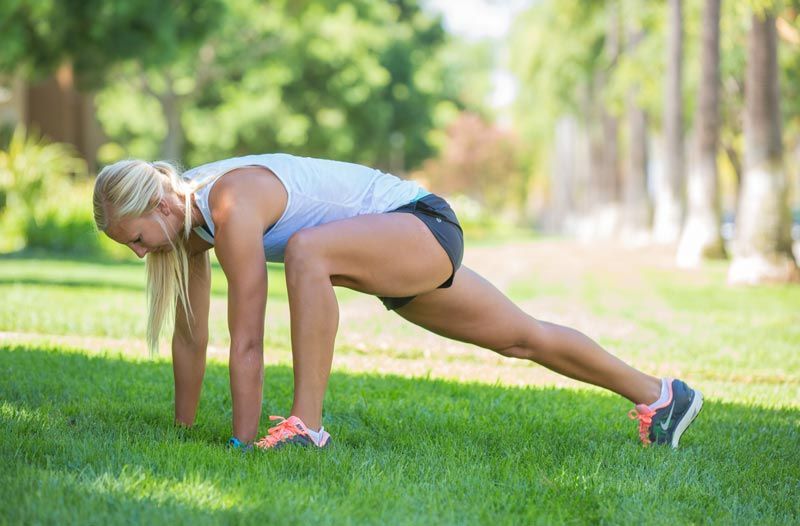
Hold a high plank and bring your right knee up to the outside of your right elbow while keeping your left leg straight behind you. Hold for three to four seconds and switch legs. The movement should be slow and steady, focusing on stretching the hip of the extended leg. Perform eight to 10 reps on each leg.
Bouncing
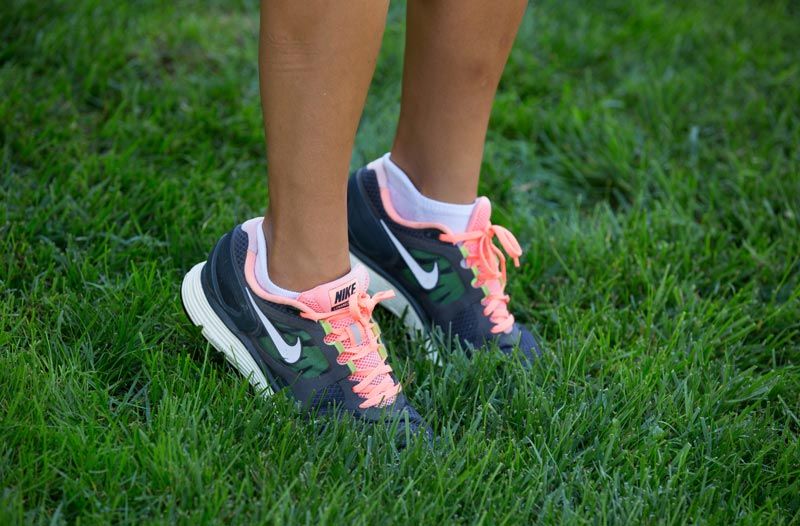
Stand in place with your knees slightly bent and bounce up and down on the balls of your feet. While most of your weight should be in the balls of your feet, allow your heels to lower all the way to the ground between each repetition. Perform 12 to 15 reps.
Jumping Jacks
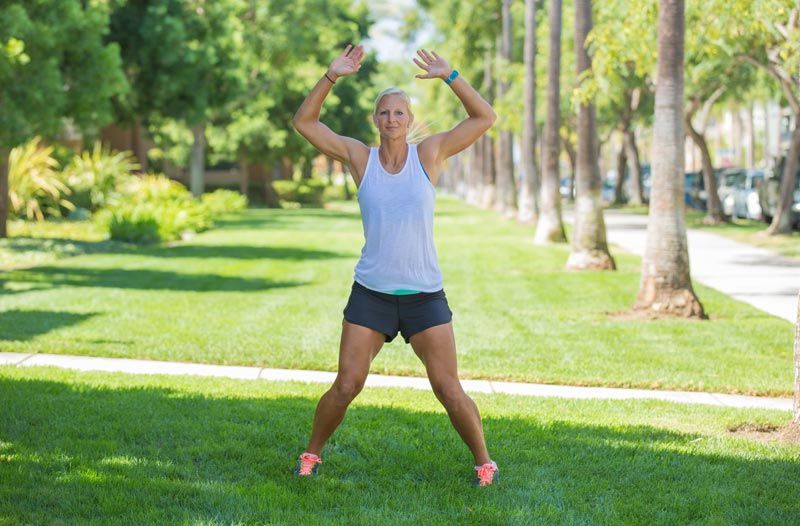
An oldie but goodie, jumping jacks are a great exercise for warming up the ankles, hips and shoulders while also elevating heart rate. Perform 12 to 15 reps, resting 15 to 30 seconds between sets.
For the following exercises, use approximately 5 to 10 meters of running space. Complete the rep and walk back to the starting position for an active recovery before the next rep. Complete two to three reps of each exercise before moving to the next one.
Fast Feet and Arms
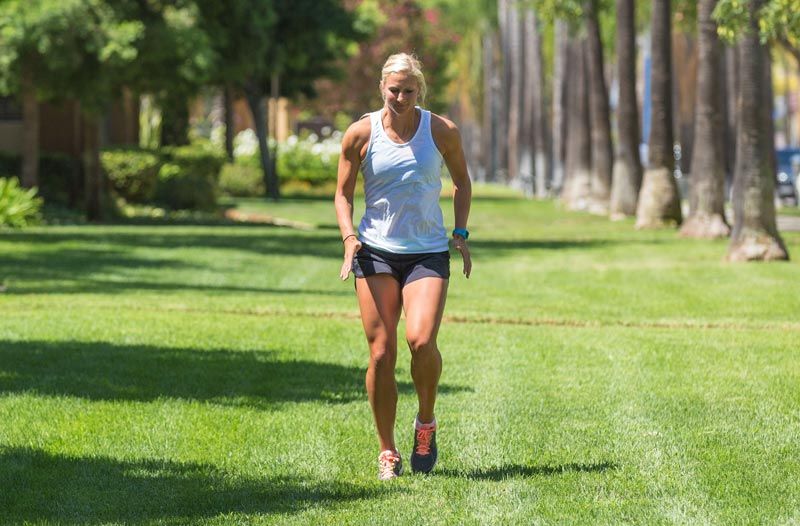
Stay on the balls of your feet and move your feet and arms as fast as possible. The goal is to have as many foot touches as possible from the start to the finish. Keep your feet close to the ground and your elbows close to your body and bent at 90 degrees (the movement should be from your shoulders, not elbows) for optimal mechanics.
Lateral Shuffle
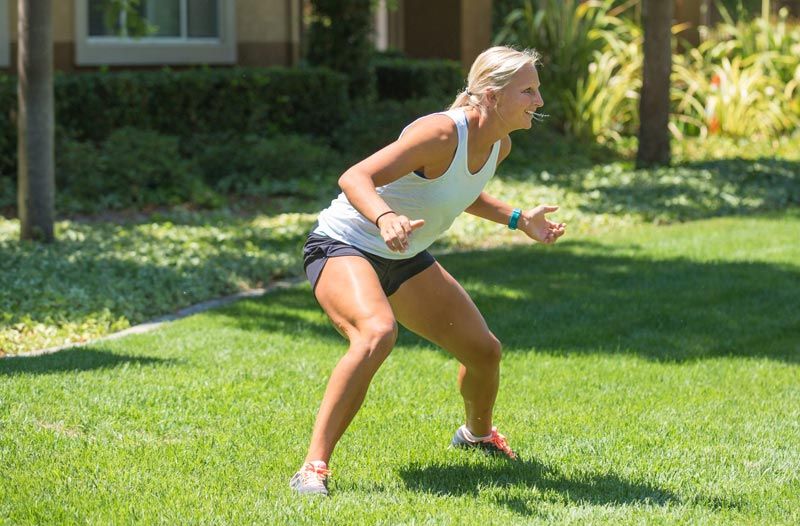
Keep your feet parallel and move sideways from the start to the finish.
High-knee Running
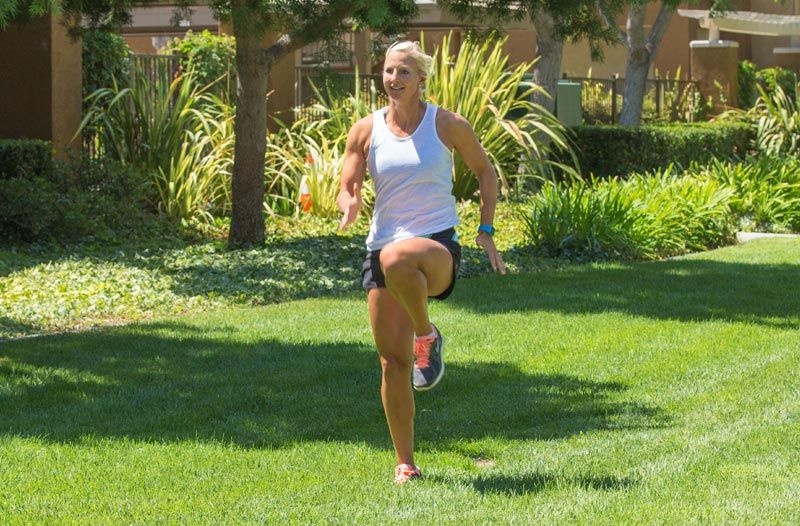
Pick your knees up high while pulling your ankle directly up to your tailbone (almost like pedaling a bicycle). Emphasize leaning forward while driving your arms back explosively during the movement.
Skips

Focus on keeping your feet on the ground for the shortest time possible. Try to push your foot into the ground to explode up while driving your opposite arm into the air.
Workout
Striders
Start with a longer distance and run at approximately 70 to 80 percent of your max running speed. Run the sprint and then walk back to the start. Allow at least 30 seconds between sprints. Focus on maintaining good form, not being out of breath. Start with three to four reps and work up to eight to 10.
Sprints
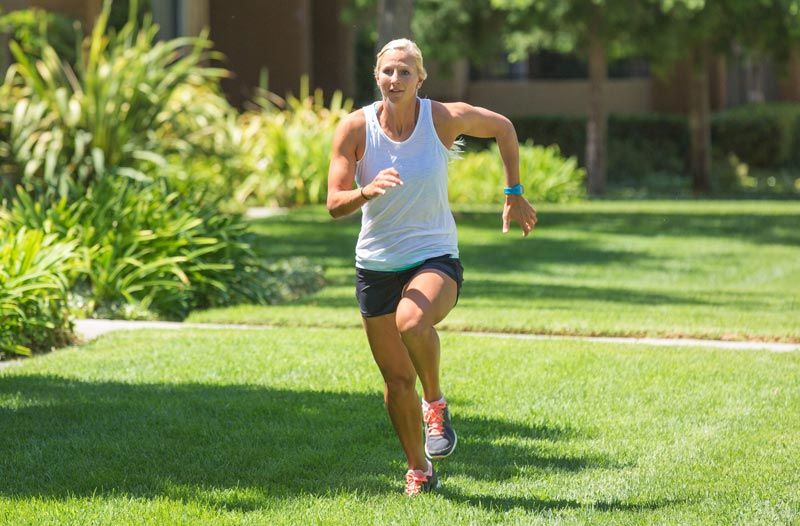
Start with a distance of approximately 20 to 30 meters. Your goal should be speed of movement, not distance covered. As you improve your fitness and ability to tolerate the discomfort of high-intensity work, add distance and reps. Run at 100 percent effort and then walk back to the start and rest for approximately 30 to 45 seconds. Start with four to five reps, work up to eight to 10 at a longer distance.
This might not seem like a lot of exercise, but if done correctly you will definitely feel the results. Allow some time (three to five weeks) for your body to adapt to the high intensity work before adding more distance or reps. Have fun—and remember, when you’re in charge of your own sprints they turn out to be much more enjoyable than you may remember.




 by
by 












 by
by